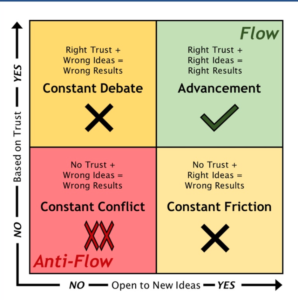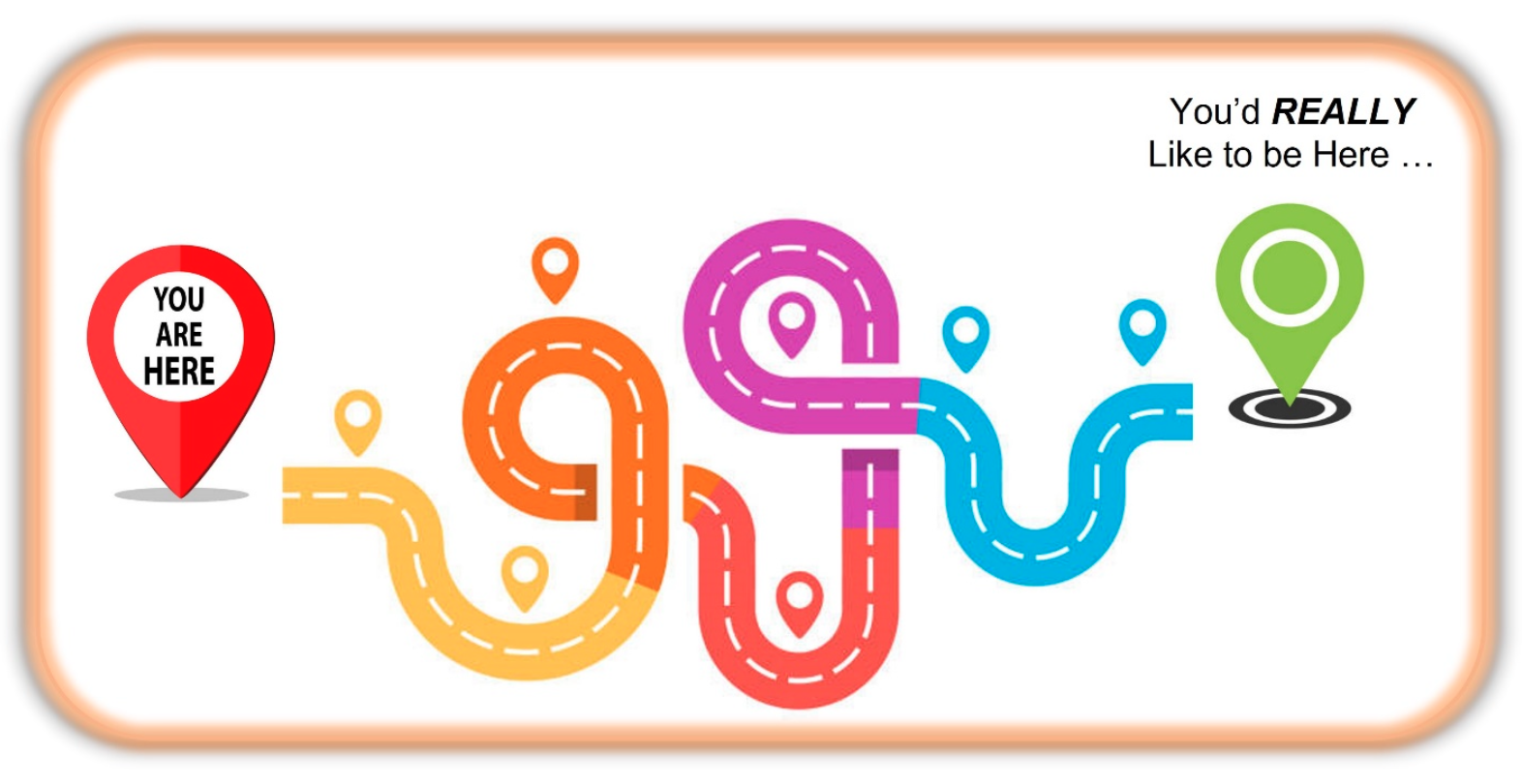 Many organizations get so caught up in what they currently do and how they do it, that they cannot find ways to effectively improve how they operate and experience the growth that stems from that kind of change. Plotting a path to organizational growth, especially based on the projects it chooses to execute, can be a challenge. The fundamental elements are not overly complicated, but the work to make the change is hard.
Many organizations get so caught up in what they currently do and how they do it, that they cannot find ways to effectively improve how they operate and experience the growth that stems from that kind of change. Plotting a path to organizational growth, especially based on the projects it chooses to execute, can be a challenge. The fundamental elements are not overly complicated, but the work to make the change is hard.
Stripping back the veneer of “pretend change” and finding how execution Value comes from properly communicated Vision and choices rooted in those fundamental elements often takes fresh eyes and a willingness to do things in a very different way. It can be a bit unnerving, but the alternative is stagnation.
Through this series of articles, we’ll highlight and discuss some of the fundamental elements that are necessary to effect real growth and improvement that is sustainable, and weed out the things that only add noise and distraction.
Changing Course and Four Pillars
You have acknowledged things are not going where you intended them to go. You have recognized some of your barriers, especially the complacency that fosters stagnation. The status quo isn’t good enough anymore and you want to commit to the kind of change that will plot a course upward on the maturity scale. You may not know everything that needs to be done, but you are ready to tackle change head on.
Trust and Verify
 In the first article, we brought up barriers to change that most organizations and individuals encounter. The “Absence of Trust” is one of the five trouble areas author and speaker Patrick Lencioni brings up in his book “Five Dysfunctions of a Team”. If we reverse course, we need to find a way to build a culture that invites trust at the beginning and then reinforces it at every turn, always wary of losing it an retreating from the path to change. As noted in the graphic above, the kind of trust we’re talking about comes in three basic stages: Granted, Earned, and Sustained.
In the first article, we brought up barriers to change that most organizations and individuals encounter. The “Absence of Trust” is one of the five trouble areas author and speaker Patrick Lencioni brings up in his book “Five Dysfunctions of a Team”. If we reverse course, we need to find a way to build a culture that invites trust at the beginning and then reinforces it at every turn, always wary of losing it an retreating from the path to change. As noted in the graphic above, the kind of trust we’re talking about comes in three basic stages: Granted, Earned, and Sustained.
Granted trust is exactly as it sounds. It’s also one of the harder things to do, especially in a new situation or organization. But that initial and rudimentary level of trust that says, “We are working together to achieve something good” still needs to gain a foothold if we are going to move forward and follow the choices to change that will bring us to the higher levels of maturity and productivity.
Granted trust is all well and good, but it doesn’t get us where we need to ultimately go. In order to keep trust “healthy and growing” we need to put ourselves and those we are working with in the position to earn more trust, almost as one would deposit funds in an investment account. Earned trust leads to Sustained trust. Together, these serve as “working capital” for our business relationships. That level of trust can also, when necessary, help us recover from breaches or lapses that invariably happen (as long as they don’t go too far and rip out the whole foundation).
Granting, earning, and sustaining trust is hard work. As we noted before, it doesn’t need to be complicated and, in fact, it’s far better if it isn’t. But it will take focused effort by all those involved who are committed to plotting the course to change we’re seeking and achieving the higher maturity we need to grow substantially.
Innovation Breeds Change
 While Vision and Flow will play a big part in the change you choose (and we’ll explore that in the next article), Innovation probably pairs better with Trust than any of the others. Ideas are the fuel that feeds change in any organization. They are the antidote to what often amounts to an addiction to the status quo. World history is ripe with examples of innovation (and the innovators that brought them to life) and we can credit nearly everything we consider a “modern convenience” a result of innovation.
While Vision and Flow will play a big part in the change you choose (and we’ll explore that in the next article), Innovation probably pairs better with Trust than any of the others. Ideas are the fuel that feeds change in any organization. They are the antidote to what often amounts to an addiction to the status quo. World history is ripe with examples of innovation (and the innovators that brought them to life) and we can credit nearly everything we consider a “modern convenience” a result of innovation.
Of course, innovation and the change it brings rarely comes without pain. Frankly, that’s the hard part that so often causes organizations to avoid it and go back to what they had been doing before, even if that isn’t producing the desired results. If innovation and trust aren’t mutually applied to any model for change, you end up creating various levels of debate and friction that will hold back and impede your change.
Riding Innovation and Flow
 Limited or no trust coupled with inadequate or limited ideas leads to an atmosphere of constant conflict. That is a state of “anti-flow” that will continually fight against the changes you need to move your organization forward and plot the course to growth and improvement. If you are able to adjust one of those two factors, you can get out of the constant conflict, but will more than likely find yourself in a state of either constant debate (higher trust but the wrong ideas) or constant friction (good ideas but lacking in trust across the teams and organization).
Limited or no trust coupled with inadequate or limited ideas leads to an atmosphere of constant conflict. That is a state of “anti-flow” that will continually fight against the changes you need to move your organization forward and plot the course to growth and improvement. If you are able to adjust one of those two factors, you can get out of the constant conflict, but will more than likely find yourself in a state of either constant debate (higher trust but the wrong ideas) or constant friction (good ideas but lacking in trust across the teams and organization).
It’s only when you foster the culture of trust and embrace the right innovation your organization needs to find Flow and advance your efforts. As noted in the graphic, both trust and innovation are on a continuum and need the right balance for your organization to advance. That’s where the components of Vision and the Flow model will come into play. We’ll explore those in more detail in the next installment. For now, focus on how you can build trust and foster innovation.
Back to the Journey
Everything we’ve written to this point speaks to a journey toward a new destination. We used this graphic in the second installment and are bringing it back to emphasize the choice to begin changing and the realization that you’ll need to adjust many times as you embark on the journey. Much like the old Nissan commercial stated, “Life is a journey. Enjoy the ride.” The journey to growth and improvement should be enjoyable. But that doesn’t mean it won’t be without twists and turns. Some of them will throw you; some of them will set you back; all of them will challenge you to achieve something better than what you have now. Much like the Mandalorian might say, “This is the way”.
But, Wait There’s More!
We’ve briefly discussed four pillars that you need to consider if you are choosing to change. Trust and innovation will lead the way and Vision and Flow (or a similar framework) will help chart the course. None of it can be done successfully in isolation and all of it will come with some degree of difficulty. It’s not a straight path but, then again, straight paths are usually boring.
In the next article, we’ll expand on Vision and the key elements of Flow (like the 4-D model). We’ll explain the need for any initiative (especially those being done as part of an organizational change) to provide tangible Value.
Bio
Mark Moore, M2PCC’s Executive Consultant, is an experienced leader and communicator, with a long track record of successful program and project management, training development and delivery, and transformational change. He brings over three decades of experience spanning multiple industries and disciplines. His focus on delivery of Value aligned with Vision lies at the heart of FLOW and organizational transformation.
Executive Consultant
mark@m2projectconsultingcorp.com
919.724.3679

